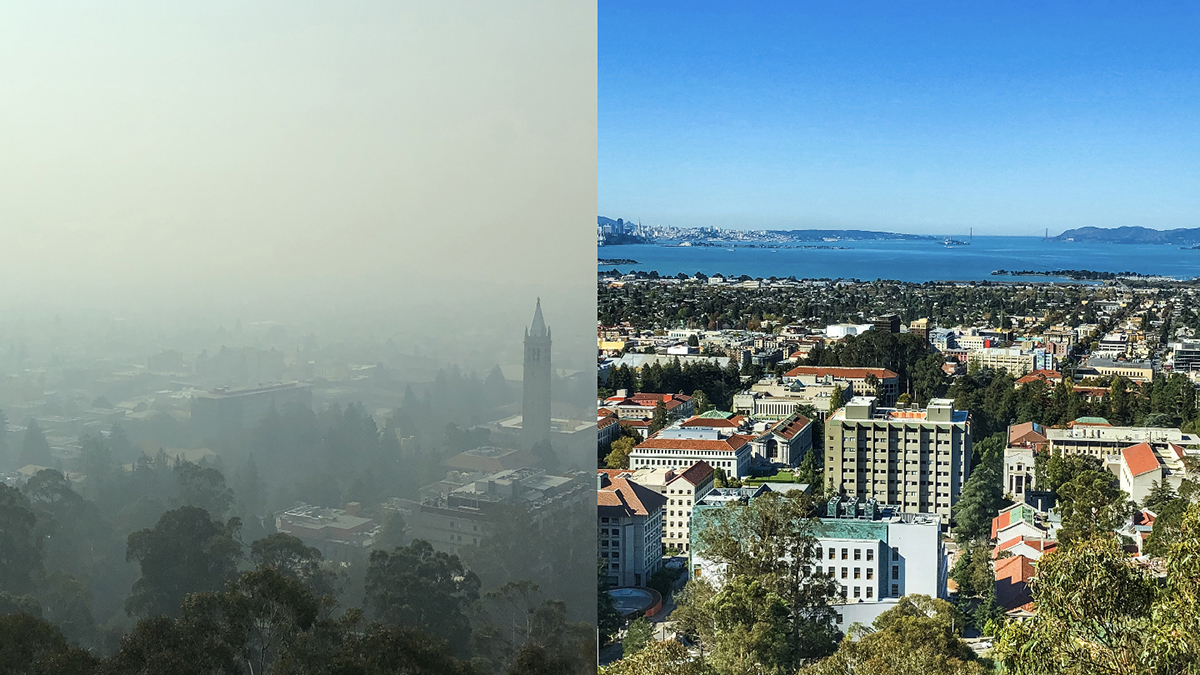Software for smart thermostats to leverage HVAC systems for health and indoor air quality during wildfires.
Status: Current
Funding Sources: CITRIS, CBE memberships
Project Objective
The goal of this project is to develop control software to automatically adjust residential HVAC system operation using local outdoor PM2.5 concentrations to provide healthy indoor air quality. Using insights from crowd-sourced thermostat data from over 8,000 Californian homes, we will develop algorithms to decide when to override HVAC operation and turn on recirculation and air filtration in response to wildfire smoke events. We are conducting a pilot in several California homes, and will use the results to optimize the software prototype.
Significance to Industry
Wildfires in the western United States have been increasing in frequency and magnitude in recent decades, are a major source of fine particulate matter (PM2.5) that constitutes a major environmental risk factor for human health and mortality. Recent estimates of the socioeconomic and health costs of wildfires in California have shown yearly damages worth hundreds of billions of dollars, and climate models suggest that climate change will further amplify the risks and effects from wildfire.
Previous analyses of the health impacts from wildfire smoke are based mainly on outdoor concentrations of PM2.5. Yet people in the US spend approximately 90 percent of their time indoors, and mainly shelter indoors during smoke events. Protecting against PM2.5 in homes involves more than just construction quality, since behaviors and HVAC system usage can reduce exposure through recirculation and filtration of indoor air. However, the ability of HVAC systems to deliver cleaner air without heating or cooling is often overlooked by homeowners as a viable response to wildfire smoke.
Research Approach
Internet-connected ‘smart’ devices can monitor indoor environments, collect large amounts of data and automate system functions. Smart thermostats are becoming rapidly adopted, and offer opportunities to automate HVAC systems during wildfires. This research is proceeding in three parts:
Profiling residential HVAC usage: We analyzed smart thermostat data from the Ecobee ‘Donate Your Data’ program from nearly 8,000 California homes to understand how HVAC systems could be better utilized during wildfire events. We will use information on housing characteristics and location for retrieval of air quality (AirNow) and weather data (NOAA). We will also work with Ecobee to anonymously survey a small group of Californian users about their HVAC usage during air pollution episodes. These datasets will be merged and analyzed to train the control software described below.
Smart thermostat control software: We are developing a software tool for automated HVAC control optimization in homes during wildfires. The first component establishes a data exchange between the local HVAC system and remote information sources for local outdoor air quality, weather and energy pricing. The second component is a control algorithm to optimize HVAC system operation to reduce occupant exposure to PM2.5. It performs real-time evaluations of local and remote data signals to decide when to override HVAC operation during wildfire events. The software will minimize occupant exposure to PM2.5 by proactively initiating recirculation and air filtration when outside air quality is unhealthy. For example, it could protect occupants by automatically turning off ventilation, turning on air recirculation, change status to fan-only mode, and send users notifications and explanations of the actions taken. The algorithm may also consider other criteria such as thermal comfort and marginal energy costs.
Demonstration: Finally, we are validating the software through a proof-of-concept field study in a small number of Californian homes during starting in July of 2022. We also installed low-cost particle sensors in these homes to monitor indoor PM2.5 concentrations. This data will provide the necessary evidence to evaluate the viability and efficacy of the intervention.
This work is planned as proof-of-concept that existing smart devices in homes can be leveraged to improve the resiliency of the built environment. It presents an exciting opportunity to connect with both the private and public sector. At the conclusion of this research we intend to smart thermostat companies to see this software solution implemented int existing products. Further integration, for example with low-cost sensor networks like PurpleAir, could lead to additional innovations. For the public sector, we believe insights from this project will help organizations responsible for air quality-related health policies.
Featured image: Views of the San Francisco Bay during a smoke event on November 14, 2022 (left) and three weeks prior. (Berkeley Lab / Kelly J. Owen)

